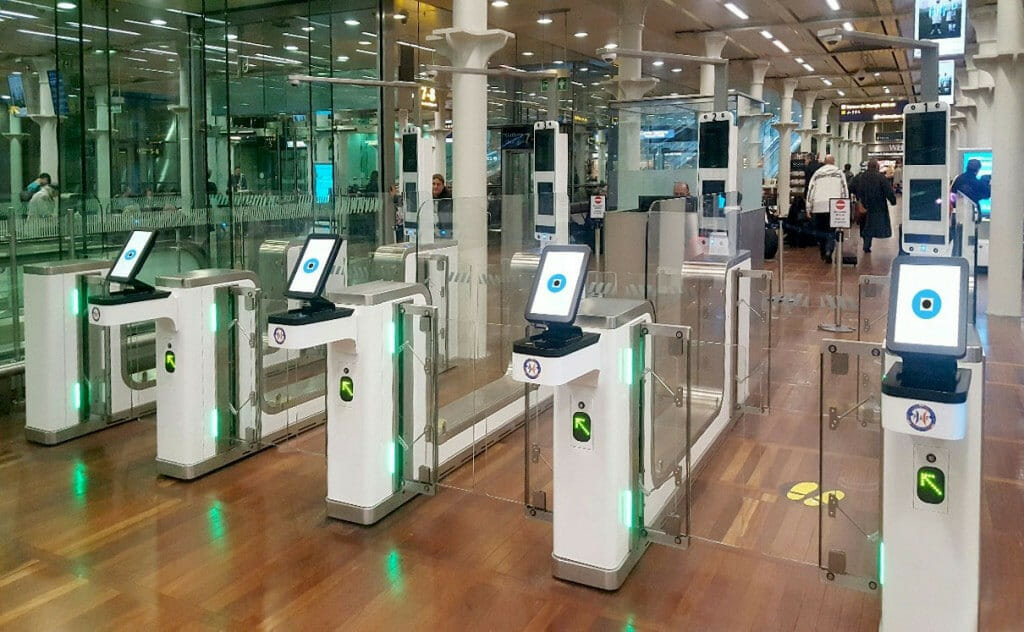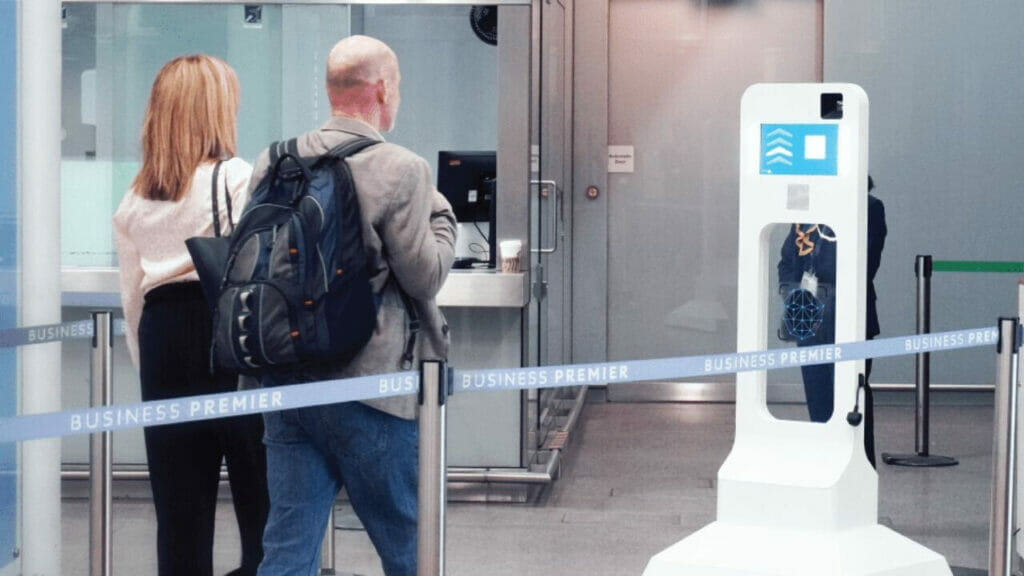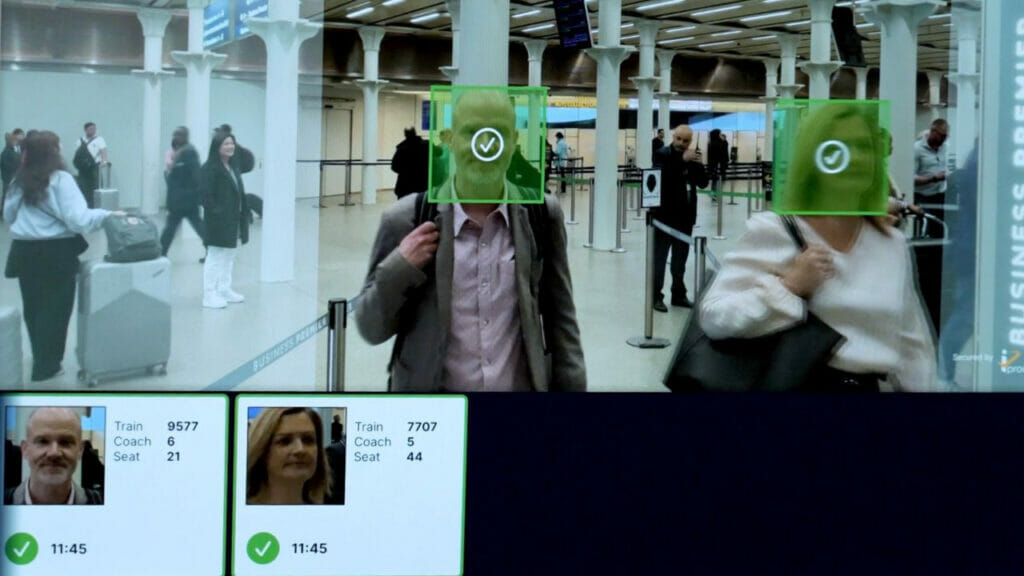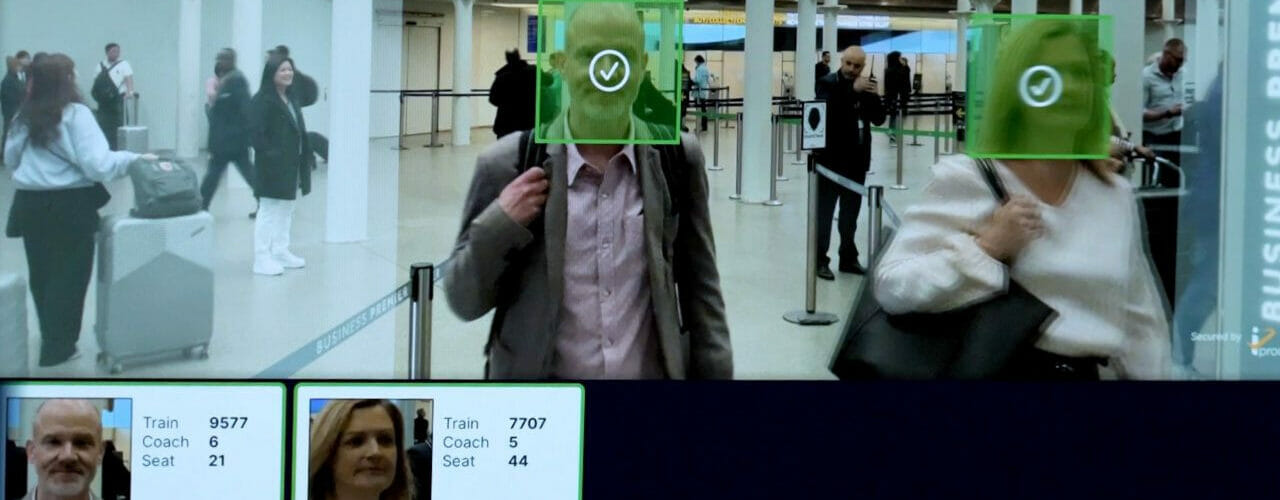The following report is by The Next Web:
The first-ever biometric corridor for train travel opened today at Eurostar’s London terminal.
The system, developed by British tech firm iProov, replaces border checks with a facial verification checkpoint that you just walk straight past.

Before travel, the passenger downloads the app, authenticates their ID, scans their face, and links their ticket. On arrival at St Pancras Station, they stroll through a dedicated lane for the tech — dubbed SmartCheck — which verifies their entry.
The system lets users skip ticket gates and manual border control in the UK. After baggage inspection and a passport check at the French border, they’re free to board the train.
With no fiddly paper documents, prying British sentries, or protracted camera scans, SmartCheck promises shorter queues and smoother throughput. Initially, the system will only be available for Eurostar’s Business Premier and Carte Blanche passengers. But the company aims to extend the service to all customers and — perhaps — more borders.
The CEO of Eurostar, Gwendoline Cazenave, told TNW that she plans to provide a launchpad for the tech.
We wanted to show that seamless, automated cross-borders are not just science fiction — they’re now a reality.
She said.

SmartCheck is years in the making. In 2020, the UK’s Department for Transport awarded iProov part of a £9.4m fund for innovative rail projects, which was used to develop the biometric system. The next year, live trials of the contactless service began at Eurostar.
In the original trial we had people stopping — and people don’t like to stop. That’s when we decided to shoot for the free-flow experience.
Dominic Forrest, CTO at iProov, said
A day before the launch, TNW trialled the tech. Aside from some issues with mobile internet in the station, the experience was seamless.
After entering the biometric lane, we strolled straight past the facial verification checkpoint. From the other side, we could see the system uses a commercial iPad. The speed and accuracy, says Forrest, derive from the processing power and face-matching algorithms that run on the device.
Similar tech has been tested at airports, but this is the first deployment at a train station. According to iProov CEO Andrew Bud, rail travel presents extra challenges for biometric corridors.
The controls are different, the throughput is different, and the way that information flows is very, very different.
He said.

The space is also different. At peak levels, around 11 million annual Eurostar customers pass through an area the size of three tennis courts — which means efficient checks are vital.
Another difference is the level of surveillance. According to Bud, the biometric systems in airports are more intrusive than SmartCheck.
The information all flows through the airport backbone, so your face and identity data is controlled by the airlines and the facial verification system in the airport. In this case, it’s sitting in your phone.
Bud said.
Bud is keen to address concerns about surveillance. According to iProov, all personal data is stored securely on the user’s smartphone and encrypted during operation. Once verified, the information is only shared with the ticket gate and passport control services. After a maximum of 48 hours, it’s deleted from these systems.
Privacy campaigners have also raised fears about surveillance creep. Normalising facial verification, they warn, will accelerate adoption of intrusive monitoring tech. In response, Bud emphasises that SmartCheck is strictly an opt-in product. The users, he adds, will only be compared to images they submit, rather than any mass database.
This is not surveillance. A user can choose to enroll and use SmartCheck or not — and nobody will ever compel them to do so.
He said

Another concern around biometrics involves AI biases. Studies have shown that facial recognition has higher error rates for certain skin tones, genders, and ages. According to iProov, these biases have now been addressed in industry-leading systems.
As evidence, the company can point to recent research. In June, the National Institute of Standards and Technology (NIST) reported that each of the top 150 facial recognition algorithms is over 99% accurate for Black males, white males, Black females, and white females. Surprisingly, white men were the lowest-performing of the demographic groups for the top 20 algorithms.
Concerns will persist, but iProov’s research suggests the public will embrace the tech. According to a survey taken during trials of SmartCheck, 86% of users are likely to opt for the service.
In the future, they could get many more chances to try it.
This is applicable to any kind of high throughput environment where you want to make sure that you know who’s going in.
That might be sports stadiums, music venues, even office buildings — anywhere you want to facilitate the entry of high volumes of pre-checked people into places where bad people could cause harm.
Bud said.
AUTHOR COMMENTARY
“This is not surveillance” – yet.
Another brick in the foundation for the coming mark of the beast system. What would have been big “prophetic” news a decade ago now is so commonplace it’s everywhere, it seems.
[16] And he causeth all, both small and great, rich and poor, free and bond, to receive a mark in their right hand, or in their foreheads: [17] And that no man might buy or sell, save he that had the mark, or the name of the beast, or the number of his name. [18] Here is wisdom. Let him that hath understanding count the number of the beast: for it is the number of a man; and his number is Six hundred threescore and six. Revelation 13:16-18
[7] Who goeth a warfare any time at his own charges? who planteth a vineyard, and eateth not of the fruit thereof? or who feedeth a flock, and eateth not of the milk of the flock? [8] Say I these things as a man? or saith not the law the same also? [9] For it is written in the law of Moses, Thou shalt not muzzle the mouth of the ox that treadeth out the corn. Doth God take care for oxen? [10] Or saith he it altogether for our sakes? For our sakes, no doubt, this is written: that he that ploweth should plow in hope; and that he that thresheth in hope should be partaker of his hope. (1 Corinthians 9:7-10).
The WinePress needs your support! If God has laid it on your heart to want to contribute, please prayerfully consider donating to this ministry. If you cannot gift a monetary donation, then please donate your fervent prayers to keep this ministry going! Thank you and may God bless you.







